Discos' domestic consumers, KE: Base tariff for over 300 units' consumption raised
By Mushtaq Ghumman
ISLAMABAD: The National Electric Power Regulatory Authority (Nepra) has raised base tariff for domestic consumers of Discos and KE using above 300 units monthly by Rs 1.68 per unit and Rs 1.39 per unit for other categories.
The decision which will be applicable from November 1, 2021, has been issued just days before the expected formal announcement of agreement between GoP and the IMF.
Early this year, Nepra had determined an increase of Rs 3.34 per unit in base tariff to cover the impact of capacity payments and devaluation of Rupee, of which Rs 1.95 per unit was notified in January this year whereas the government withheld the remaining impact of Rs 1.39 per unit despite giving assurance to the IMF, the World Bank and the ADB that it would be notified on June 1, 2021.
On November 2, 2021, during the hearing at Nepra, the Ministry of Energy (Power Division) submitted that for life line consumers and protected consumers up-to 200 units, no increase in tariff has been proposed. However, for the remaining domestic consumers, an increase of Rs.1.68IkWh is proposed, which also includes the impact of life line and protected consumers.
For other consumer categories, a lower increase of Rs.1.39IkWh has been proposed, as the Government does not want to overburden these consumers, especially industrial consumers, so that they remain competitive.
The Ministry further submitted that the proposed increase in tariff would be applied prospectively and is within the overall revenue requirement determined by Nepra. It was also explained that keeping in view the National Policy of maintaining uniform tariff across the country, same increase would also be applicable to the consumers of K-Electric.
Upon inquiry from the Authority regarding increase in tariff for domestic consumers consuming up-to 300 units, the Ministry submitted that in Phase-I of the subsidy retargeting program, slabs revision has been approved by the Authority, whereby life line consumption limit has been increased to 100 units and protected consumer category has been created for consumers consuming up-to 200 units for six months.
However, there are certain consumers, who get subsidy in winter months despite using more than 300 units during summer.
Power Division officials maintained that the ultimate goal of the Government is to allow targeted subsidies and recover the cost of electricity. In Phase-II and Phase-III, the subsidies will be rationalized further, to improve the cross subsidy in such a manner that pillars of the economy e.g. industry remains competitive and is not overburdened.
Phase-II is under preparation, and will be presented before the Authority for approval. Regarding providing subsidy to those who use up-to 300 units, if such consumers are given subsidy, the differential would be shifted to other consumer categories.
It was further apprised that around 45% of the domestic consumers are still getting subsidy, along-with agriculture consumers. The total net subsidy being provided by the Federal Government is around Rs.168 billion.
The Authority has noted that the Federal Government through its motion has proposed consumer end tariff for certain consumer categories higher than the uniform tariff, if consolidated on the basis of Nepra's national average.
Regarding higher category wise tariff proposed by the Federal Government for various categories of consumers, Nepra has clarified that it does not levy any surcharges rather it is the Federal Government which has the statutory power to do so.
Under Section 31(8) inserted through Regulation of Generation, Transmission and Distribution of Electric Power (Amendment) Ordinance, 2021, the Federal Government has the power to levy surcharges and any such surcharge is to be considered as a cost to be included in the tariff determined by NEPRA.
The authority also understands that the proposed tariff by the Federal Government is also within the overall revenue requirement of Discos as determined by the Authority.
Regarding, K-Electric, the Ministry requested to issue revised Schedule of Tariff (SoT) determined for the Quarter January to March 2020, with its prospective application.
According to Nepra, it is also a fact that K-Electric's MYT FY 20 17-2023 was notified on May 22, 2019 and its quarterly adjustments, pursuant to notification of its MYT, have been determined by the Authority till quarter ended March 2020.
Nepra is of the view that quarterly adjustment determined for the quarter "January to March 2020' is applicable for the quarter "April to June 2020.
However, if the changes are not reflected in the SoT of K-Electric, it would result in differential tariff for K-Electric consumers vis-a-vis rest of Pakistan.
In view thereof, the authority has decided to amend the SoT determined for the quarter "January to March 2020" to be effective November 1, 2021. The SoTs for the period from April 2020 till October 31, 2021 would be issued as per the existing practice.
Vice Chairman Nepra, Rafique Ahmad Shaikh, in a dissenting note has said "National Electricity Policy, 2021 requires timely recovery of full cost of service but the cost should be prudent.
The capacity payments to inefficient power plants, extension of PPAs of 1994 Power Policy, inefficient transmission system etc are all imprudent costs, which can't be passed on to consumers. The true cost of electricity means the prudent cost only."
This article first appeared in Business Recorder on 6 Nov 2021.
For the latest news, follow us on Twitter @Aaj_Urdu. We are also on Facebook, Instagram and YouTube.




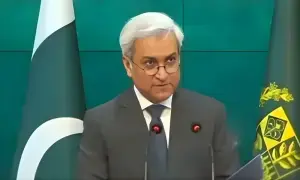

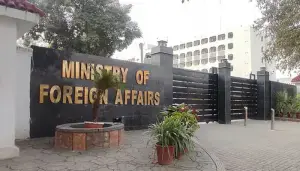

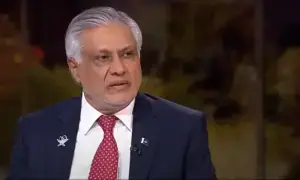


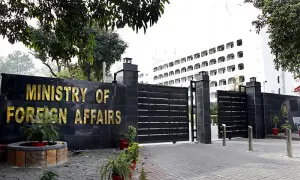


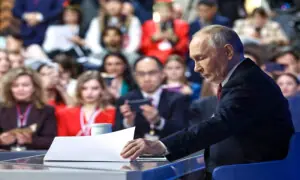
Comments are closed on this story.